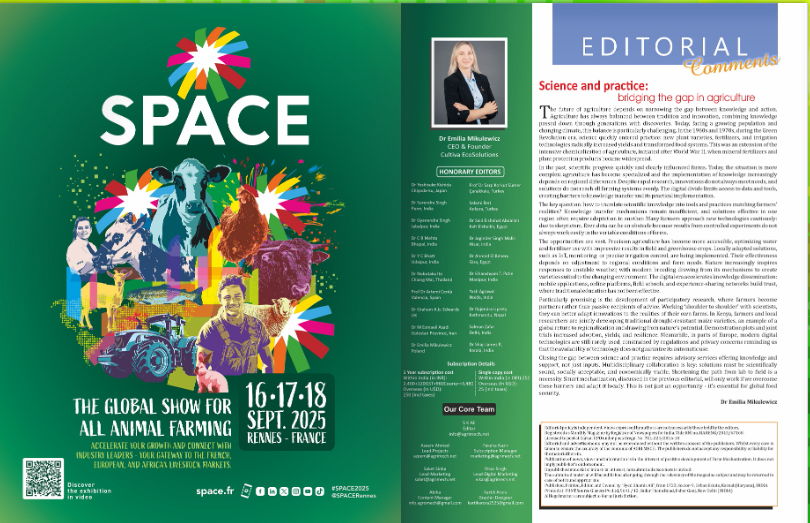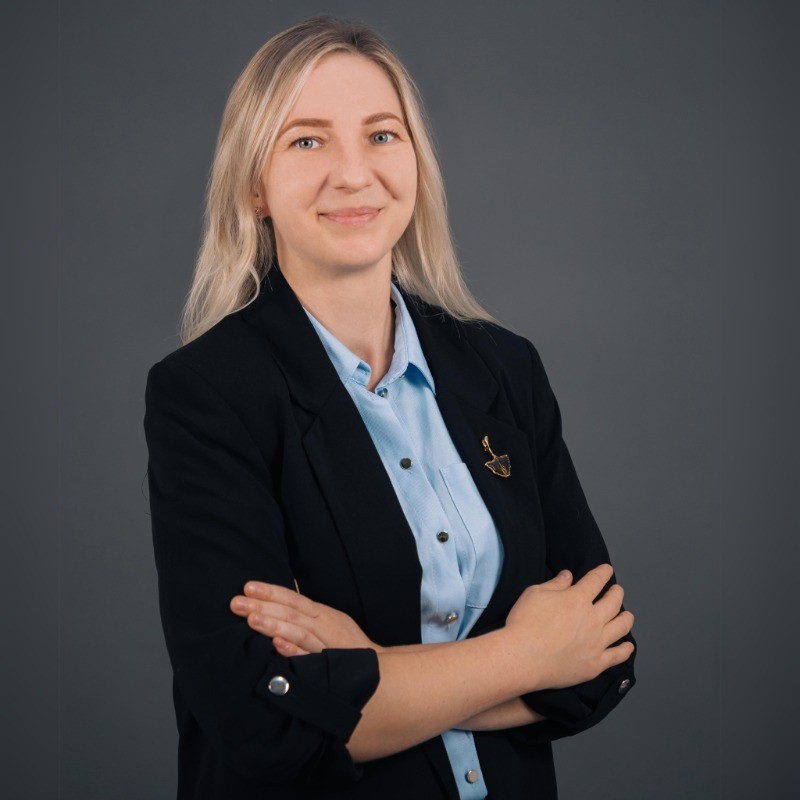پلی بین علم و مزرعه
نگاهی به اندیشهها و تجربیات دکتر امیلیا میشلوویچ، پژوهشگر جهانی کشاورزی پایدار
دکتر امیلیا میشلوویچ: هیچ راهحل نهایی بدون مشارکت کشاورز ممکن نیست
دکتر امیلیا میشلوویچ - Dr. Emilia Mikulewicz - از جمله چهرههای شاخص و پرکار در عرصه کشاورزی و باغبانی پایدار در سطح جهانی است. او که....

تحریریه تلویزیون اینترنتی کشاورزپلاس: دکتر امیلیا میشلوویچ - Dr. Emilia Mikulewicz - از جمله چهرههای شاخص و پرکار در عرصه کشاورزی و باغبانی پایدار در سطح جهانی است. او که در منطقه وارمیا - Warmia - لهستان، در دل سنتهای دیرینه کشاورزی بزرگ شده، از همان کودکی با فضای دامداری و تولید شیر، خو گرفته بود، اما عشق و علاقهاش به گیاه و کشتوکار سبز، او را به دنیای زراعت و باغبانی کشاند. این پیوند زودهنگام با زمین، سنگ بنای دانشی شد که امروز از او چهرهای جهانی در زمینه کشاورزی نوین، هیدروپونیک، و کشاورزی ارگانیک ساخته است.
او دکترای خود را در رشته زراعت و باغبانی از دانشگاه وارمیا و مازوریا در اولشتین- Olsztyn- دریافت کرده و در سالهای فعالیتش، هم در حوزه تحقیق و هم آموزش، نقش فعالی ایفا کرده است. پژوهش دکترای او درباره امکان سازگاری و کشت موفق گوجهفرنگی پوستدار مکزیکی در اقلیم سرد لهستان، یکی از نمونههای ارزشمند تلاش برای بومیسازی گیاهان خاص در شرایط آبوهوایی دشوار است. همین نگاه مسئلهمحور و کاربردی، بعدها در تأسیس شرکت مشاورهای بینالمللیاش با عنوان Cultiva EcoSolutions نمود پیدا کرد؛ شرکتی که امروز در زمینه کشاورزی پایدار، هیدروپونیک، پرماکالچر و مشاورههای جهانی در خط مقدم نوآوری قرار دارد.
او در سرمقاله اخیر نشریه AgriMech شماره اوت ۲۰۲۵ نشریه AGRI MECH با عنوان «علم و عمل: پر کردن شکاف در کشاورزی»، نگاهی دقیق و کاربردی به چالش اصلی دنیای کشاورزی امروز داشته است: فاصلهای که میان دانش علمی و عمل روزمره کشاورزان افتاده. او با اشاره به تجربههای زیستهاش، بر ضرورت مشارکت فعال کشاورزان در پژوهشها، تبادل دانش میان دانشگاه و مزرعه، و استفاده از راهحلهای بومیشده و متناسب با اقلیم تأکید دارد.
دکتر میشلوویچ معتقد است که فناوری و علم، تنها زمانی در خدمت کشاورز قرار میگیرد که با زبان او، با تجربهاش و در دل مزرعهاش معنا پیدا کند. او از کشاورزی هوشمند، کشاورزی دقیق، و استفاده بهینه از منابع دفاع میکند، اما تأکید میکند که «هیچ راهحل نهایی بدون مشارکت کشاورز ممکن نیست». به باور او، کشاورز باید از «گیرنده دستور» به «شریک پژوهش» تبدیل شود، و این دگرگونی، نیاز به اعتماد، آموزش و ساختار حمایتی دارد. برای کشاورز ایرانی که امروز با چالشهای آب، خاک، نهاده، بازار و سیاستهای گاه ناپایدار مواجه است، این نگاه میتواند چراغی روشن باشد؛ چراغی که میگوید تغییر ممکن است، اگر دانش در خدمت مزرعه قرار گیرد و تجربه، از دل زمین به پژوهش راه یابد.
The full text of Dr. Emilia Misolewicz's article titled 'Science and Practice: Bridging the Gap in Agriculture,' published in the August 2025 edition of AGRI MECH, is as follows.
Science and practice: bridging the gap in agriculture
The future of agriculture depends on narrowing the gap between knowledge and action. Apart from the gaps between basic and thematic, data and practice, or primary production and processing, the mismatch with dissemination, training, extension, and perceptions about changes makes this intersection particularly challenging. The issue is a pressing problem and encompasses climatic, ecological, and geopolitical dimensions. There was an era of impressive technological breakthroughs in the post-war decades, most systems were based on intensive use of chemical/conventional fertilizers and pesticides after World War II. When chemical fertilizers and pesticides became affordable to everyone, usage replaced traditional practices.
In the past, scientific progress was closely aligned with improvements in farms. Today, the situation is more complex, engagement between science and practice does not automatically translate into technology adoption. Stakeholders process knowledge differently and the linear flow of knowledge is increasingly questioned. Ambiguities are found in policy and regulation, sometimes access to data and tools, and constraints on implementation slow down scaling of innovation.
There is huge room for translation research! Knowledge and tools need participative exchange between all stakeholders from farmer to scientist. Research questions should arise from practical needs and feedback loops. We should strive for context-specific solutions that take into account local differences. Implementation is more than technical feasibility – it requires institutional change, investment, and communication between stakeholders.
The organization is not alone. Precision agriculture has become more accessible, optimization of inputs and reduction of environmental impacts is feasible and advantageous. Locally adapted strategies, technologies, and training are available in several areas. We need new incentive systems and sustainable approaches to sustainability: regulations, insurances and financing. Narrow knowledge traps require responses to rebalance working with and within knowledge silos. This is an investment in creative capacities of the agriculture system. Integrated knowledge, communication strategies and multi-actor involvement can strengthen resilience.
One of the biggest gains is the development of participatory research where farmers become partners, not just recipients in the innovation system. Mobilizing knowledge from science and local experiences for better design requires mediation and trust. There is more research on how a bundle of practices can increase impact instead of single practice approaches. The connection between farmers and scientists must be supported by education and trust. Meanwhile, in parts of Europe, renewable digital services are becoming widely available and affordable. While smart farming is not a silver bullet, precision technologies can reduce losses, increase production and promote circular use of resources.
The overall ambition of our journal is to offer a platform for bridging the gap between science and practice in agriculture. Multidisciplinary collaboration, locally relevant research, and actionable knowledge are key. We believe agricultural research should be solution-oriented, context-specific, and farmer-engaged. This is not just an opportunity – it is a necessity for our shared future.
Dr Emilia Misolewicz






دیدگاه تان را بنویسید